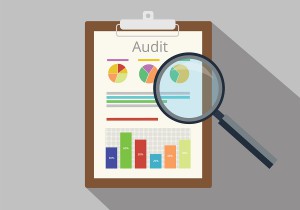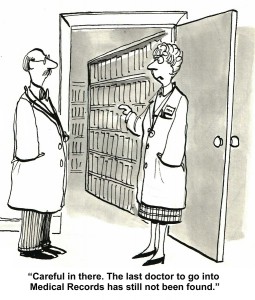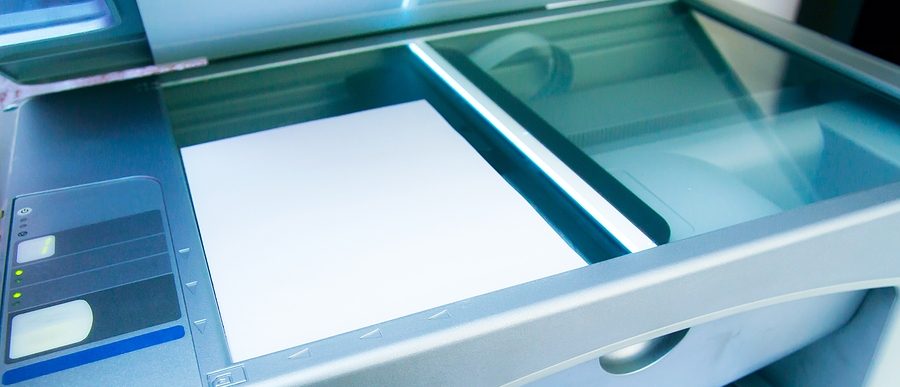
 Managing paper records has been the traditional and primary method of storing business records and other documents until the late 20th century. Usually, it includes the processes of maintaining and storing physical or hard-copy documents.
Managing paper records has been the traditional and primary method of storing business records and other documents until the late 20th century. Usually, it includes the processes of maintaining and storing physical or hard-copy documents.
Technology has led many modern companies to adopt newer methods of managing paper records. However, paper document management systems are still not uncommon in business today.
Many small businesses can handle paper. This is due to their size and the minimal number of records they need to keep track of. Other highly regulated industries, like healthcare or legal practices, may also maintain paper documents. They need to for legal compliance or to meet industry audit requirements.
As a result, the paper-based document management system is far from a thing of the past. However, that doesn’t mean there isn’t room to make improvements to the process. In this article, we cover strategies for improving your paper-based system that range from making use of offsite document storage services to integrating an electronic document management system.
Establish a Firm Document Retention and Destruction Schedule
 To help improve and streamline the process of managing paper records, it’s important that you lay out a clear document retention policy for your business records.
To help improve and streamline the process of managing paper records, it’s important that you lay out a clear document retention policy for your business records.
Records retention plans help layout and maintain guidelines for how long different types of records should be kept. Additionally, when it’s no longer necessary, the document should be destroyed.
By adhering to a record retention and destruction program, you can help to maximize your document storage capabilities. Regular shredding and disposal of unneeded records will help to reduce office clutter and keep the remaining records organized.
A record retention policy also adds some security to your program. Old documents that you may no longer need can still contain confidential information. The less sensitive information you have still lying around the office, the less your odds are of these documents falling into the wrong hands.
Implement an Audit and Accountability Program
 When your business already has a document management system and records retention policy in place, the difficult part is already over. The next step of the process is just building and improving on what you already have.
When your business already has a document management system and records retention policy in place, the difficult part is already over. The next step of the process is just building and improving on what you already have.
To do this, companies implement what are called audit or accountability programs for their paper-based record management systems.
Maintaining and carrying out regular audits on the company record inventory is done by business leaders. They can analyze and evaluate the effectiveness of their document management systems in execution.
Evaluation of a document management system allows you to gain insights and ask specific questions about your current strategies. For example, you may find that despite a well-organized system, your business struggles to quickly locate and access files due to the sheer size of inventory. You may want to consider alternative approaches to document management such as an EDMS or offsite storage facility.
Make Use of Offsite Record Storage Services
 While some companies have begun scanning their records and converting them to electronic formats to streamline the efficiency of their use and minimize the space they take up in the office, some businesses still prefer or may be required to maintain traditional paper records in the office as well.
While some companies have begun scanning their records and converting them to electronic formats to streamline the efficiency of their use and minimize the space they take up in the office, some businesses still prefer or may be required to maintain traditional paper records in the office as well.
For a cost-effective solution to this problem, many of these still paper-based businesses turn to offsite document storage facilities. There are multiple benefits that offsite storage services can provide to help improve the overall effectiveness of a paper management system.
When your documents become unmanageable, it may be more useful to dedicate your in-house office space to more productive uses. For example, hiring employees who can help to make the company money. At the same time, you will be storing your records at an offsite location where they can still be both secure as well as easy to access.
Keeping your records at an offsite storage facility also plays to a company’s advantage. In the event of a fire or environmental damage at your office, critical documents will still be kept safe at an offsite storage location. The facilities are usually climate-controlled and make use of flood shelves to prevent chances of potential water damage.
It is also common practice for offsite storage services to take additional measures to guarantee the security of the documents. This ranges from employee safety screening to 24-hour security staff, surveillance, and alarms.
Integrate Paper and Electronic Document Management Systems
 Document scanning and electronic document management systems (EDMS) have become increasingly commonplace in modern offices due to increased efficiency.
Document scanning and electronic document management systems (EDMS) have become increasingly commonplace in modern offices due to increased efficiency.
Businesses can cut down on general paper clutter by scanning. They can maintain the majority of company records digitally using an EDMS. Instead, they only keep documents that are necessary in paper format in the office. This juggling act of document formats may seem complicated initially. There are a few tips business owners can follow as a general rule of thumb.
Tips For Business Owners
A Record Is a Record: Regardless of the format the document takes, remember that all records are created equal. When using a hybrid document management system, companies will frequently want to separately identify their electronic from their paper records.
Have an “Official” Record: In hybrid work environments, it’s not uncommon for the same document to be circulating in both paper and digital formats. You must take steps to label which of these versions—and in which format—is the official copy in your hybrid system. This helps to maintain a balance between the ease of access to a hybrid management system and the formal organization of your official records.
Implement a Universal Lifecycle for Records: Regardless of the record format, maintain the same process for managing electronic and paper documents through their lifespan. This includes following similar classification structures, indexing systems, and document retention and destruction schedules.
Don’t Get Carried Away With Convenience: While a major advantage of a hybridized document management system is the convenience of accessibility it offers, be wary of letting unnecessary “convenience copies” of your documents hang around after you no longer need them. Hold onto only your official record archives to keep your overall document inventory volume down. This also minimizes your cost of storage.
Start Managing Your Paper Records the Right Way!
From record retention schedules and offsite document storage services to hybridized paper and electronic document management systems, our experts can help you develop and improve your traditionally paper-based record management systems.
At Record Nations, we specialize in connecting our customers with a network of the top document scanning, storage, and management providers in the area. No matter the requirements of your company’s document management systems, we are confident we can help you find a customized document management solution that can suit your needs.
To start using an offsite storage service or integrating an EDMS, just give us a call at (866) 385-3706, use the live chat, or simply fill out the form to request a free quote today!











